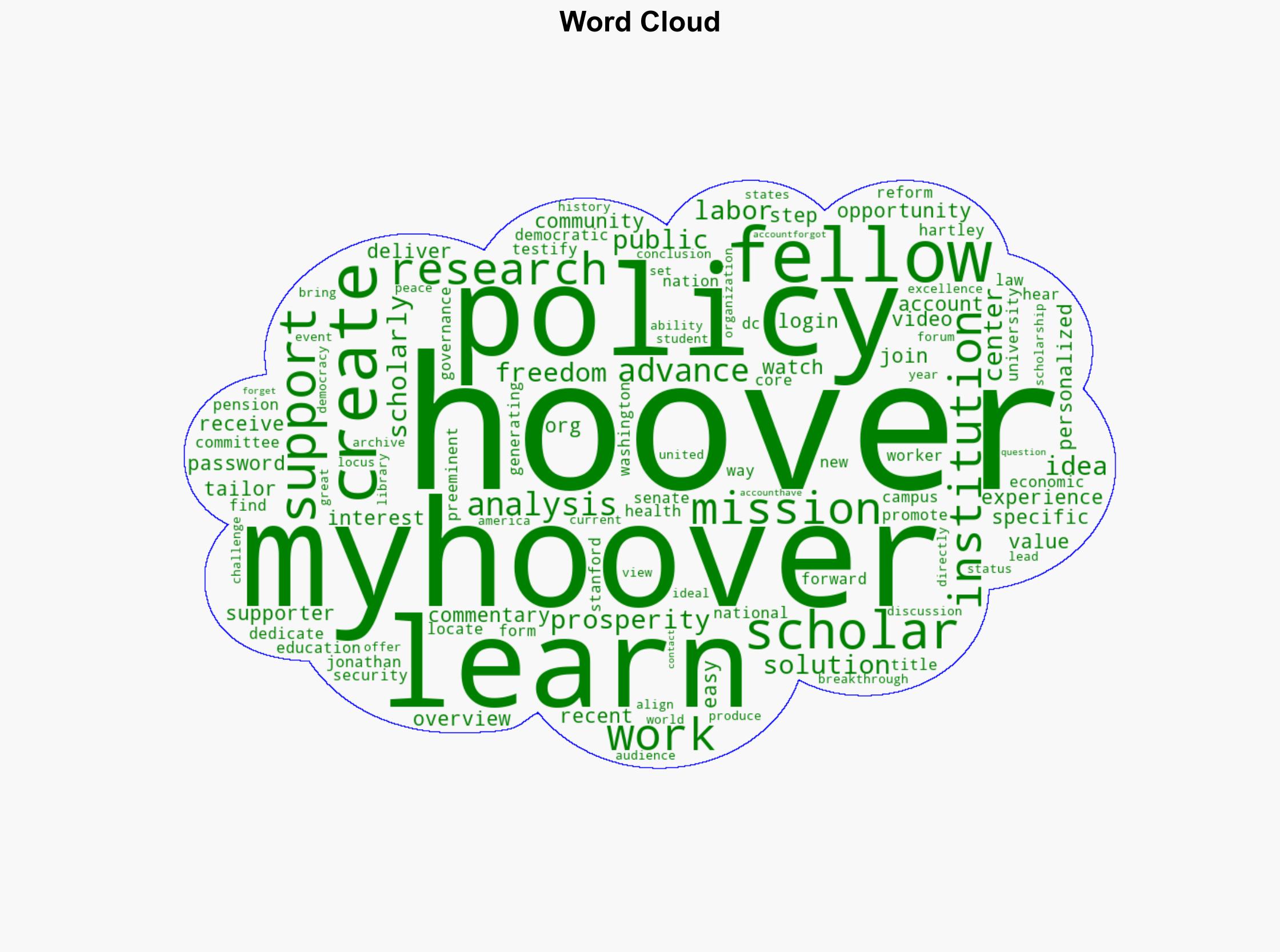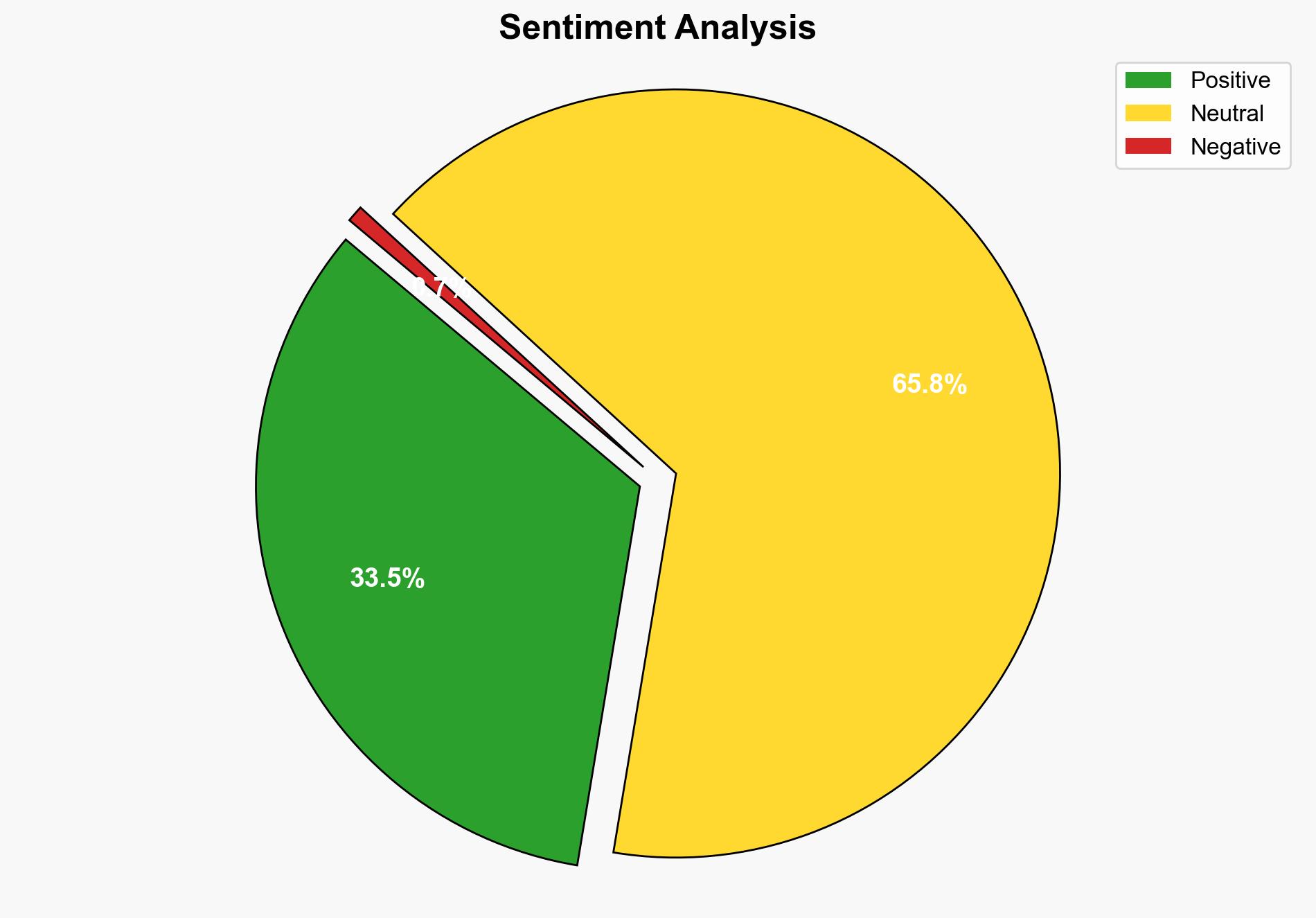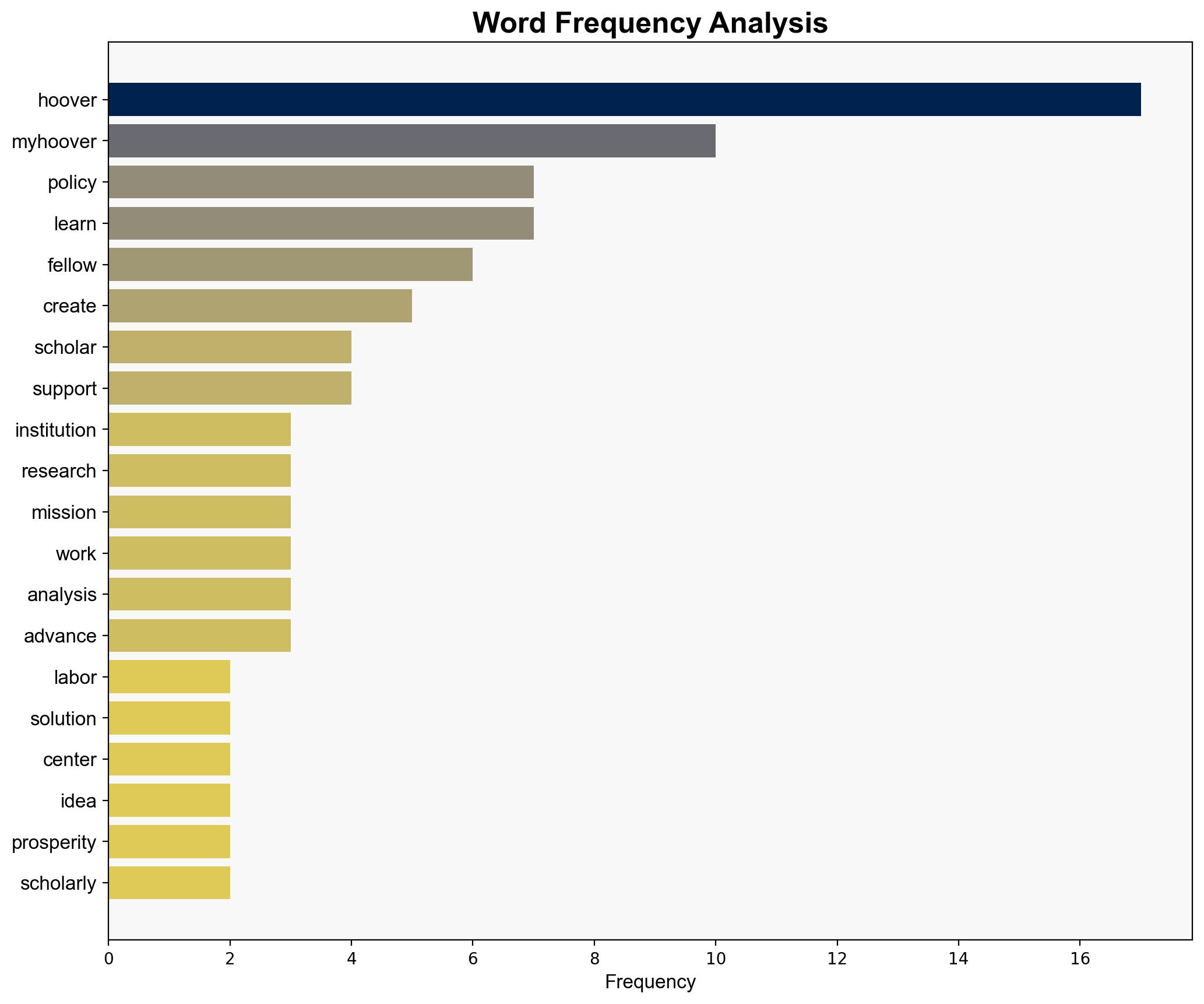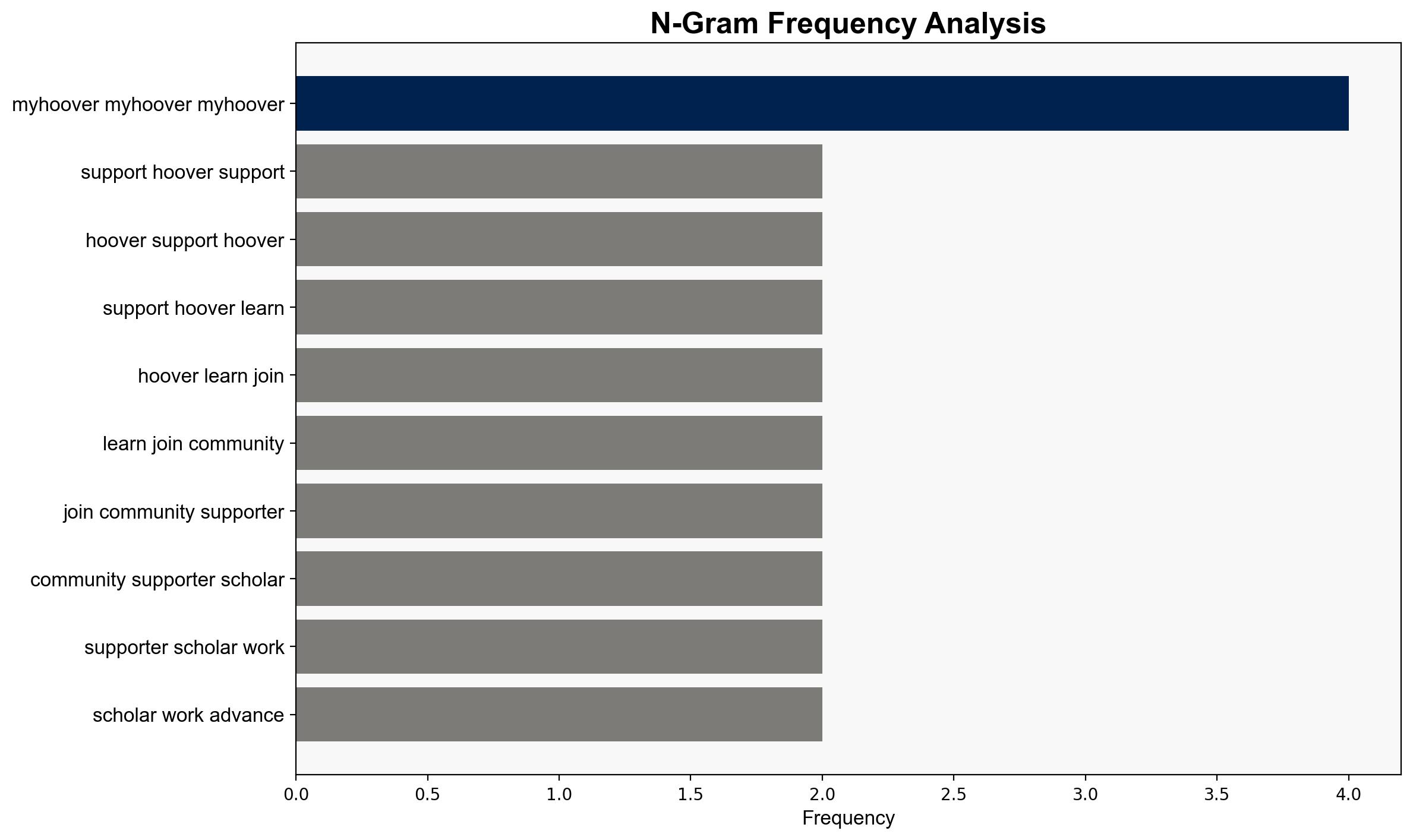Labor Law Reform Part 2 New Solutions For Finding A Pro-Worker Way Forward – Hoover.org
Published on: 2025-10-23
Intelligence Report: Labor Law Reform Part 2 New Solutions For Finding A Pro-Worker Way Forward – Hoover.org
1. BLUF (Bottom Line Up Front)
The analysis suggests two primary hypotheses regarding the Hoover Institution’s involvement in labor law reform discussions. The first hypothesis posits that the Hoover Institution is advocating for labor law reforms that align with pro-worker policies to enhance economic prosperity and democratic governance. The second hypothesis suggests that the institution’s involvement may primarily serve to promote policies that favor economic growth over worker rights. The first hypothesis is better supported by the available data. Confidence level: Moderate. Recommended action: Engage with key stakeholders to clarify intentions and ensure balanced policy outcomes.
2. Competing Hypotheses
1. **Hypothesis A**: The Hoover Institution is genuinely advocating for labor law reforms that prioritize worker rights and align with democratic governance and economic prosperity.
2. **Hypothesis B**: The Hoover Institution’s advocacy for labor law reform primarily aims to promote economic growth, potentially at the expense of worker rights.
Using the Analysis of Competing Hypotheses (ACH) 2.0, Hypothesis A is more strongly supported by the institution’s stated mission and historical emphasis on democratic governance and economic prosperity.
3. Key Assumptions and Red Flags
– **Assumptions**:
– Hypothesis A assumes that the Hoover Institution’s public statements accurately reflect its internal priorities.
– Hypothesis B assumes that economic growth objectives may overshadow worker rights considerations.
– **Red Flags**:
– Lack of specific examples or case studies in the source text to illustrate the institution’s impact on labor law reform.
– Potential bias in the source due to institutional affiliation.
4. Implications and Strategic Risks
– **Implications**: Successful advocacy for balanced labor law reform could lead to enhanced worker rights and economic stability. Conversely, prioritizing economic growth over worker rights could lead to social unrest and policy backlash.
– **Strategic Risks**: Misalignment between policy intentions and outcomes could damage the institution’s credibility and influence. Economic and geopolitical tensions may arise if reforms are perceived as inequitable.
5. Recommendations and Outlook
- Engage in dialogue with labor organizations to ensure reforms are inclusive and equitable.
- Monitor policy developments and public reactions to adjust strategies as needed.
- Scenario Projections:
- Best Case: Reforms lead to increased worker satisfaction and economic growth.
- Worst Case: Reforms result in worker dissatisfaction and economic instability.
- Most Likely: Incremental reforms with mixed outcomes for workers and economic indicators.
6. Key Individuals and Entities
– Jonathan Hartley
– Hoover Institution
7. Thematic Tags
national security threats, economic policy, labor rights, democratic governance





